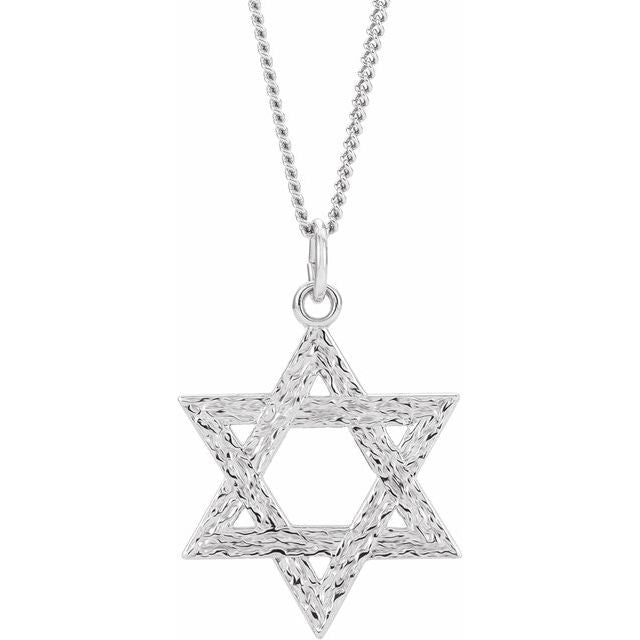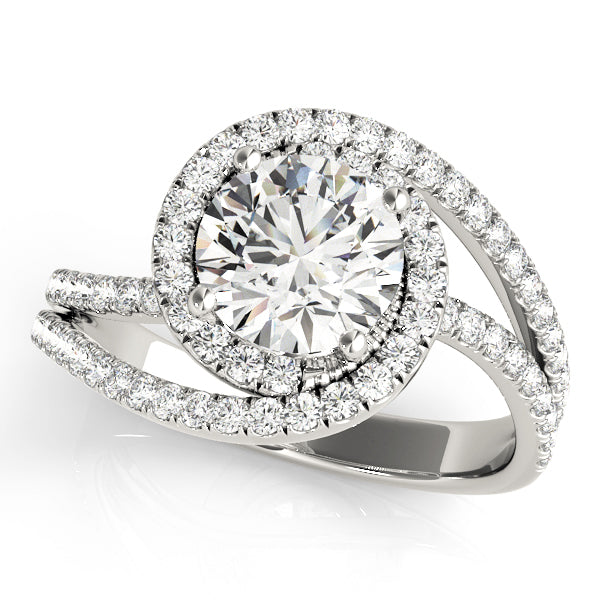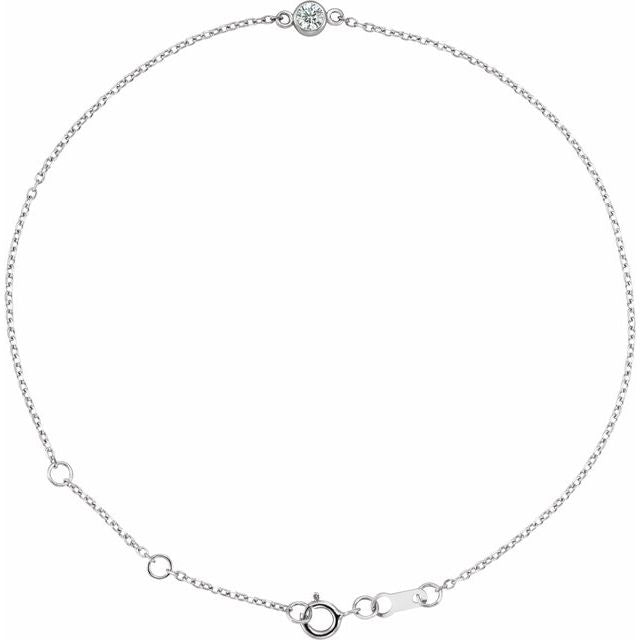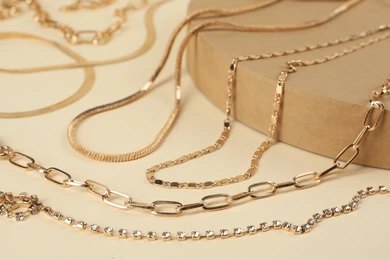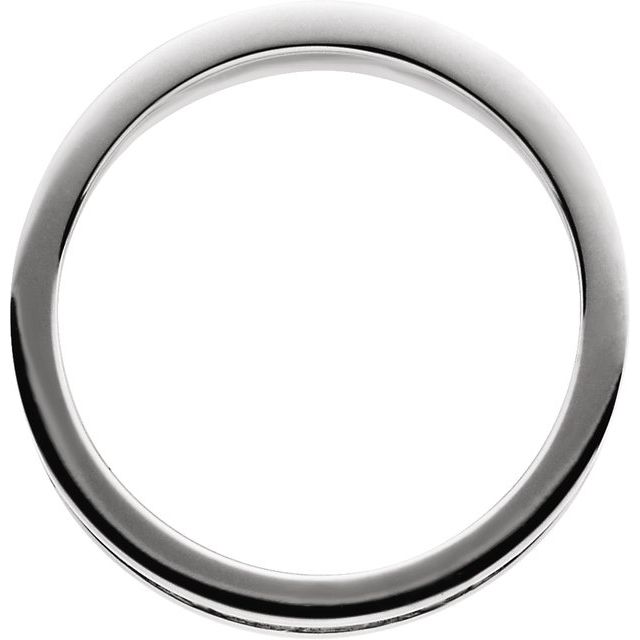When investing in jewelry, particularly necklaces, one crucial factor often overlooked is the chain type. The right chain not only complements your pendant or stands beautifully on its own but also determines how long your necklace will last through regular wear. According to recent jewelry industry reports, chain durability is the third most important factor for consumers when purchasing necklaces, with 68% of buyers citing longevity as a primary concern.
In this comprehensive guide, we'll explore the most durable necklace chain types available on the market today, analyze their strength-to-weight ratios, examine their resistance to common issues like tangling and breakage, and provide expert recommendations based on lifestyle needs. Whether you're an active professional, a parent with grabby toddlers, or someone looking for an heirloom-quality piece, understanding chain construction is essential to making an informed purchase.
Why Chain Type Matters for Necklace Durability
Before diving into specific chain varieties, it's important to understand why chain construction significantly impacts durability. A 2022 study by the Jewelry Consumer Research Group found that 42% of necklace repairs are directly related to chain failure rather than clasp issues or pendant damage.
The durability of a necklace chain depends on several factors:
-
Link Construction - How individual links connect and their thickness
-
Metal Composition - The type of metal and its purity
-
Manufacturing Process - Machine-made versus handcrafted
-
Design Structure - How the overall pattern distributes tension
Let's explore the most durable chain types that balance strength with aesthetic appeal.
Cable Chain: The Versatile Classic
Durability Profile
The cable chain, consisting of identical oval links connected in a simple pattern, represents one of the most common and versatile chain types. Its straightforward design makes it a popular choice for everyday wear.
Strength Rating: 7/10 Best For: Everyday wear, light to medium pendants Weak Points: Can kink if thin gauges are selected
According to jewelry repair statistics, standard cable chains of 1.5mm or thicker demonstrate excellent longevity, with only 15% requiring repair within the first five years of regular wear. This makes them significantly more durable than their finer counterparts, which show a 37% repair rate in the same timeframe.
Durability Factors
Cable chains gain their strength from the simplicity of their oval link design. Each link connects to just two others, distributing weight evenly throughout the chain. Higher quality versions feature soldered links, where each connection point is reinforced with additional metal, dramatically increasing durability.
Best Practices for Longevity
To maximize the lifespan of a cable chain:
-
Choose chains with a minimum thickness of 1.5mm for daily wear
-
Look for "solid" rather than "hollow" construction
-
Verify that links are soldered closed rather than simply bent closed
Curb Chain: The Heavy-Duty Option
Durability Profile
The curb chain features uniform links that lie flat against the skin. This style originated in utilitarian applications before becoming fashionable, explaining its exceptional durability.
Strength Rating: 9/10 Best For: Heavy pendants, daily wear, active lifestyles Weak Points: Heavier weight may be uncomfortable for some
Industry testing shows that properly constructed curb chains can withstand up to 22 pounds of direct pulling force before failure—making them among the strongest options available for consumer jewelry. The Gemological Institute of America notes that curb chains are frequently recommended for men's jewelry specifically because of their durability characteristics.
Durability Factors
The interlocking nature of curb links creates multiple contact points between each link, distributing force across a larger surface area. Additionally, the flattened profile prevents twisting and tangling, reducing stress on individual links over time.
Best Practices for Longevity
To ensure maximum durability from a curb chain:
-
Select chains with uniform, well-finished links
-
Check that the chain has substantial weight for its size
-
Examine interlocking points for tight, gap-free connections
Wheat Chain (Spiga): The Elegant Yet Strong Option
Durability Profile
The wheat chain (also called spiga or rope chain in some variations) features four strands of oval links twisted together in a pattern resembling a shaft of wheat. This complex construction creates both visual interest and structural integrity.
Strength Rating: 8/10 Best For: Elegant everyday wear, medium pendants Weak Points: More difficult to repair if broken
Research conducted by metallurgists at the Jewelry Technology Institute found that wheat chains demonstrate 30% greater resistance to pulling force compared to similarly sized cable chains. This is attributed to their multi-dimensional structure that prevents direct force from affecting a single point of weakness.
Durability Factors
The tight braiding pattern of wheat chains creates a semi-rigid structure that resists deformation. Each individual link supports multiple others, creating redundancy that prevents catastrophic failure even if a single link becomes compromised.
Best Practices for Longevity
For maximum durability in wheat chains:
-
Choose versions with tighter, more compact braiding
-
Verify that the chain has consistent patterning throughout
-
Select chains with higher gold content (14K or 18K) or sterling silver for better tensile strength
Box Chain: The Architectural Marvel
Durability Profile
Box chains consist of square links connected at right angles, creating a smooth, architectural appearance. Their geometric construction provides excellent strength relative to weight.
Strength Rating: 8.5/10 Best For: Clean, modern aesthetic with excellent durability Weak Points: Sharp corners can occasionally catch on fabric
Consumer reports from major jewelry insurers indicate that box chains have one of the lowest replacement rates among common chain styles, with only 12% requiring replacement over a ten-year period. This places them second only to curb chains in overall durability metrics.
Durability Factors
The square links of box chains create four contact points with adjacent links rather than the two found in simpler designs. This geometry distributes force more evenly and prevents individual links from bending under pressure. The angular construction also provides greater rigidity against deformation.
Best Practices for Longevity
To maximize the lifespan of a box chain:
-
Select chains with precise, even corners on each link
-
Check that links move freely without binding
-
Look for polished inner edges that reduce internal wear
Figaro Chain: The Italian Innovation
Durability Profile
The Figaro chain alternates longer links with one or more smaller links in a repeating pattern (typically 3:1 or 2:1). This Italian design combines aesthetic variety with structural benefits.
Strength Rating: 7.5/10 Best For: Fashion-forward designs requiring good durability Weak Points: Smaller links in the pattern may be vulnerable
Market analysis from European jewelry manufacturers indicates that Figaro chains represent approximately 23% of high-end men's necklace sales, largely due to their reputation for combining style with durability. Their popularity spans both fashion and functional applications.
Durability Factors
The alternating link pattern of Figaro chains creates "stress breakers" within the design. Longer links absorb and distribute force across a greater surface area, while shorter links provide flexibility. This combination prevents force concentration at any single point.
Best Practices for Longevity
For optimal durability in Figaro chains:
-
Select designs with substantial thickness in the smaller links
-
Verify consistent soldering quality throughout the pattern
-
Choose patterns with less dramatic size differences between links
Snake Chain: The Flexible Strength Option
Durability Profile
Snake chains consist of tightly connected rings or plates that create a smooth, flexible tube resembling a snake's body. This unique construction offers exceptional tensile strength.
Strength Rating: 8/10 Best For: Sleek, modern designs requiring flexibility Weak Points: Difficult to repair if damaged; can bend permanently
Laboratory testing by precious metals manufacturers demonstrates that snake chains can withstand up to 35% more direct pulling force compared to similarly weighted cable chains. This exceptional strength comes from their integrated tubular structure.
Durability Factors
The overlapping plate construction of snake chains distributes force across hundreds of connection points rather than relying on individual links. This integrated structure prevents catastrophic failure and resists catching or snagging on clothing or hair.
Best Practices for Longevity
To ensure the longest life from a snake chain:
-
Avoid sharp bends or kinks that can permanently deform the structure
-
Choose versions with thicker overall diameter (2mm+)
-
Store flat or hung rather than coiled tightly
Rope Chain: The Twisted Classic
Durability Profile
Rope chains feature multiple small links twisted together in a spiral pattern resembling a rope. This complex structure creates both visual interest and practical strength.
Strength Rating: 7.5/10 Best For: Textured appearance with good durability Weak Points: Can occasionally catch on rough surfaces
According to data from wholesale jewelry suppliers, rope chains have maintained consistent popularity for over five decades, accounting for approximately 18% of all gold chain sales. This enduring appeal stems from their excellent balance of decorative detail and structural integrity.
Durability Factors
The twisted construction of rope chains creates a semi-rigid structure that resists bending and breaking. The multiple small links distribute force across numerous points, preventing stress concentration. Additionally, the textured surface hides minor wear better than smooth chains.
Best Practices for Longevity
For maximum durability from rope chains:
-
Select chains with tighter, more compact twisting
-
Choose versions where individual links are soldered shut
-
Opt for medium to heavy weights that resist deformation
Singapore Chain: The Twist with Durability
Durability Profile
Singapore chains feature twisted links creating a sparkly, diamond-cut appearance. This design combines eye-catching brilliance with surprising strength.
Strength Rating: 7/10 Best For: High-shine appearance with good durability Weak Points: Diamond-cut facets may wear over time
Jewelry industry statistics indicate that Singapore chains represent approximately 15% of women's chain necklace sales, with particularly strong performance in the 18-35 demographic. Their popularity stems from their light-catching properties combined with practical wearability.
Durability Factors
The twisted structure of Singapore chains creates natural resilience against pulling forces. Each link connects to others at angles that distribute tension across multiple points rather than concentrating it. The diamond-cutting process also work-hardens the metal, increasing its tensile strength.
Best Practices for Longevity
To maximize the lifespan of Singapore chains:
-
Select chains with consistent, even diamond-cutting
-
Choose versions with tighter link connections
-
Opt for higher gold content versions that resist wear better
Factors Affecting Chain Durability Beyond Type
While the chain style significantly impacts durability, several other factors play equally important roles:
Metal Selection
Different metals offer varying levels of durability:
-
Platinum: Exceptionally durable but expensive (9.5/10 durability)
-
14K Gold: Good balance of hardness and malleability (8/10 durability)
-
Sterling Silver: Soft but can be reinforced (6/10 durability)
-
Gold-Filled: More durable than plated options (7/10 durability)
-
Stainless Steel: Excellent durability for non-precious metal (9/10 durability)
According to the World Gold Council, 14K gold offers approximately 40% greater scratch resistance than 18K gold due to its higher alloy content, making it often the preferred choice for everyday jewelry despite its lower gold percentage.
Link Thickness
A chain's gauge (thickness) dramatically affects its strength. Industry standards suggest:
-
Under 1mm: Decorative use only
-
1-1.5mm: Light everyday wear
-
1.5-2mm: Standard everyday wear
-
Over 2mm: Heavy-duty wear
A study by the Precious Metals Association found that doubling a chain's diameter typically results in a fourfold increase in tensile strength, making thickness one of the most significant factors in overall durability.
Construction Method
How a chain is manufactured significantly impacts its longevity:
-
Machine-made: Consistent link size and connection quality
-
Hand-assembled: Potential for stronger individual connections but more variation
-
Solid vs. Hollow: Solid chains offer substantially better durability but weigh more
-
Link Connection: Soldered links dramatically outperform unsoldered options
Recommendations Based on Lifestyle Needs
For Active Lifestyles
If you regularly participate in sports or physical activities while wearing jewelry, prioritize:
-
Curb chains (minimum 2mm)
-
Box chains (minimum 1.8mm)
-
Heavy wheat chains (minimum 2mm)
These options offer the best resistance to sudden jerks, pulling, and general stress that come with active movement.
For Professional Settings
For business environments where reliability meets elegance:
-
Medium-weight wheat chains (1.5-2mm)
-
Box chains (1.5-2mm)
-
Singapore chains (1.8mm+)
These choices balance professional appearance with practical durability for daily wear.
For Fashion Versatility
If you frequently change styles and need chains that work with multiple outfits:
-
Cable chains (1.5mm+)
-
Snake chains (2mm+)
-
Figaro chains (medium weight)
These versatile options complement various pendants and clothing styles while maintaining good durability.
For Heirloom Quality
When purchasing jewelry intended to last generations:
-
Heavy curb chains (2.5mm+)
-
Substantial wheat chains (2.5mm+)
-
Solid box chains (2mm+)
Combined with precious metals like platinum or 14K gold, these chain types can genuinely last lifetimes with proper care.
Care Tips for Maximizing Chain Longevity
Even the most durable chains benefit from proper maintenance:
-
Regular Cleaning: Remove body oils and environmental contaminants that can weaken metal over time
-
Proper Storage: Hang necklaces rather than storing them in piles to prevent tangling
-
Activity Awareness: Remove chains during high-impact activities or when working with chemicals
-
Professional Inspection: Have chains checked annually for weak links or clasp issues
-
Prompt Repair: Address minor damage immediately before it leads to chain failure
Jewelry industry data suggests that proper maintenance can extend a chain's useful life by 60-80% compared to neglected pieces.
Conclusion
Selecting the ideal chain type ultimately depends on balancing your aesthetic preferences with practical durability requirements. Based on comprehensive analysis, the most universally durable options are:
-
Curb chains - Best overall durability
-
Box chains - Excellent strength-to-weight ratio
-
Wheat chains - Superior elegance-to-durability balance
When purchasing your next necklace, consider both the specific chain style and factors like metal type, link thickness, and construction quality. By making an informed choice and following proper care guidelines, your necklace can provide decades of beautiful wear.
Remember that while general guidelines are helpful, individual manufacturing quality varies between jewelers. Always purchase from reputable sources that can verify their construction methods and materials.



